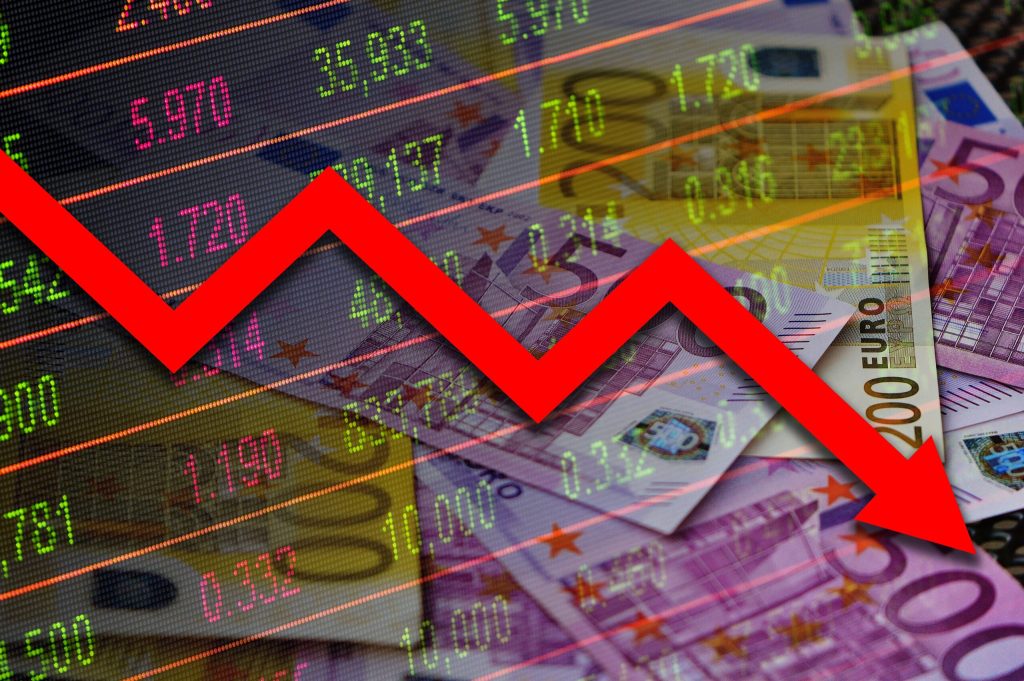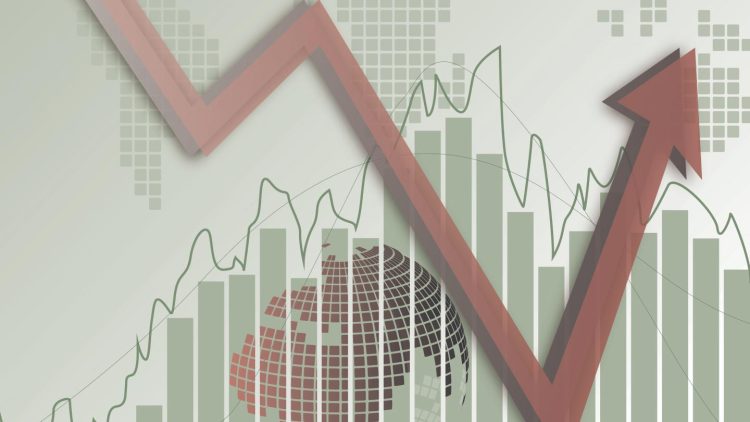As the dust settles from pandemic shocks, war-induced supply disruptions, and record-breaking monetary tightening, a more unsettling pattern is emerging across global economic landscapes: convergence—not of growth, but of deceleration. From New York to Frankfurt to Beijing, macro indicators are flashing yellow. Growth is fading, consumer demand is softening, industrial output is stalling, and private investment is pulling back. While each region faces unique headwinds, the collective signal is harder to ignore: are we on the cusp of a synchronized global slowdown?
United States: A Strong Job Market Meets Weakening Demand
The U.S. economy, often the world’s demand engine, has so far exhibited a dual character in 2025. On one side, unemployment remains low at 3.8%, and consumer balance sheets, though tighter than before, still show resilience. The AI boom and decarbonization efforts continue to support capital expenditure in select sectors. But beneath the surface, the cracks are widening.
Retail sales have flatlined in recent quarters. Inflation-adjusted wage growth has stagnated, and credit card delinquencies are rising, especially among lower-income households. The housing market remains frozen due to high mortgage rates, and new home construction is faltering.
The Federal Reserve’s “higher-for-longer” interest rate stance—while effective in taming core inflation—has begun to weigh more visibly on corporate investment and consumer borrowing. Manufacturing PMIs have been below 50 for six consecutive months, signaling contraction. Small business optimism is near multi-decade lows.
Perhaps most telling is the downward revision of GDP growth forecasts. The Atlanta Fed’s GDPNow model recently adjusted its Q2 projection to just 0.7%, a sharp drop from earlier estimates. Wall Street strategists are beginning to coalesce around the view that the U.S. is in a soft patch, with recession risks tilted toward late 2025 if fiscal drag intensifies.
Eurozone: The Weight of Industrial Malaise and Policy Fatigue
Across the Atlantic, the Eurozone’s slowdown is more pronounced and less ambiguous. Germany, long the manufacturing backbone of Europe, is teetering on the edge of a technical recession, having posted negative GDP growth in two of the past four quarters. Industrial production is down year-over-year, particularly in energy-intensive sectors like chemicals and autos.
Consumer confidence remains subdued amid persistently high food and utility prices. Although the European Central Bank (ECB) has paused its rate hikes, monetary policy remains tight, and the transmission effects are biting. Credit growth to households and businesses has slowed dramatically.
Southern Europe offers little respite. Spain and Italy have benefited from tourism and EU recovery fund disbursements, but structural issues—high youth unemployment, bureaucratic inefficiencies, and fiscal rigidity—continue to weigh on medium-term growth.
Meanwhile, France faces a different challenge: political uncertainty. Ongoing pension reform protests, strikes, and fragmentation of parliamentary support have hampered reform momentum. In aggregate, Eurozone GDP is growing at a pace barely above 0.5%, and forward indicators suggest further weakness.
ECB officials remain divided. Some argue for patience and data dependence, while others hint at premature optimism around inflation trends. The central bank’s June communication offered little clarity—mirroring the broader uncertainty of the region’s growth trajectory.
Asia: China’s Sluggish Rebound and Japan’s Fragile Optimism
Asia, once expected to lead the post-COVID global recovery, is also faltering under the weight of internal and external pressures. Nowhere is this more evident than in China.
The world’s second-largest economy started 2025 with ambitious GDP growth targets of “around 5%.” But actual performance has lagged expectations. Consumer spending remains tepid despite the removal of COVID-era restrictions. Youth unemployment, unofficially estimated above 20%, remains a political flashpoint. Property sector woes persist, with major developers defaulting and homebuyer sentiment remaining weak.
China’s export machine has also slowed, hurt by weak demand in the U.S. and EU. The government has rolled out several rounds of stimulus—targeted bond issuances, infrastructure support, and credit easing—but these have yet to generate broad-based momentum. Private sector confidence remains fragile, dampened by regulatory overhang and geopolitical tensions.
Elsewhere in Asia, Japan’s recent growth spurt—fueled by a weak yen and robust exports—shows signs of moderation. The Bank of Japan’s gradual pivot away from ultra-loose monetary policy has created volatility in bond and currency markets. While wage growth has ticked up and corporate investment remains healthy, consumer sentiment is weakening amid rising imported inflation.
Emerging Asia presents a mixed picture. India continues to post strong headline growth, powered by services and digital infrastructure. But inflationary pressures and fiscal constraints are limiting policy room. Southeast Asia is grappling with declining foreign direct investment as global companies reassess supply chain strategies.

Macroeconomic Synchrony: Not Just a Coincidence
The apparent global slowdown is not simply the sum of regional weaknesses—it reflects an underlying synchrony in macroeconomic cycles. Several structural forces are converging:
- Interest Rate Spillovers: The Fed’s tightening has global repercussions. As the dollar strengthens, capital flows out of emerging markets, pressuring currencies and forcing rate hikes abroad even when domestic demand is soft.
- Trade Compression: Global trade volumes have shrunk compared to pre-pandemic trends, a result of reshoring, geopolitical frictions, and consumer shifts from goods to services. Export-heavy economies like Germany, China, and South Korea are especially exposed.
- Investment Hesitancy: From Silicon Valley startups to German Mittelstand firms, capital expenditures are being delayed or downsized due to cost pressures, regulatory uncertainty, and market volatility.
- Policy Fatigue: After years of fiscal largesse and monetary heroism, governments and central banks are less willing—and in some cases less able—to cushion the next downturn. The buffer is thinner.
- Demographic Drag: Aging populations across the developed world are reducing labor force participation and consumption, especially in Japan, Europe, and parts of China. Even in the U.S., retirements are outpacing new entrants.
Expert Opinions: The Calm Before the Storm—or the New Normal?
Leading economists are divided over the nature and duration of this synchronization.
Mohamed El-Erian, Chief Economic Advisor at Allianz, argues that we’re in a “polycrisis of low confidence,” where global economies are vulnerable not due to one shock, but the cumulative effects of overlapping frictions. He warns that synchronized deceleration can easily spiral into stagflation if central banks misread service inflation or overcorrect on rates.
By contrast, Gita Gopinath of the IMF suggests that while the global cycle is softening, resilient labor markets and improving supply chains may allow for a soft landing. “We see signs of disinflation in core goods, and services inflation is stabilizing,” she noted in a recent panel discussion. “The challenge now is duration, not direction.”
Larry Summers has been more hawkish. He warns that “secular stagnation” may return as AI-driven productivity fails to immediately materialize, and investment lags behind technological promise.
Investor Implications: Portfolio Positioning in a Slowdown Scenario
For investors, the prospect of synchronized slowdown is both a risk and an opportunity. Equity markets have already priced in a degree of deceleration, but earnings revisions and multiple compression could accelerate if macro data worsens.
Defensive sectors—healthcare, utilities, and consumer staples—are likely to outperform cyclicals. Fixed income, long maligned, is gaining appeal as central bank rate hikes near their terminal levels. Emerging market bonds, especially in Asia, may benefit from rate cuts and stabilizing currencies.
Gold and other hard assets may see inflows amid renewed growth anxiety and geopolitical hedging. Meanwhile, currency volatility is likely to increase as capital flows shift in response to diverging monetary paths.
Crucially, investors should not rely on historical patterns alone. This is a slowdown shaped by a unique mix of structural change, policy normalization, and demographic transition. Active management and global diversification are more critical than ever.
Conclusion: The Shape of What’s to Come
So, are global economies headed for a synchronized slowdown? The data suggests yes—though the severity, length, and consequences will depend on how effectively policymakers and corporates respond to this moment of collective fragility.
This is not a sudden crash, nor is it a soft landing guaranteed. It is a slow bleed in demand, sentiment, and growth potential. The world’s major economies are not collapsing—they are converging toward a lower-growth plateau.
The real question isn’t whether slowdown is happening—it’s whether we have the tools, imagination, and political will to transform deceleration into resilience.













































